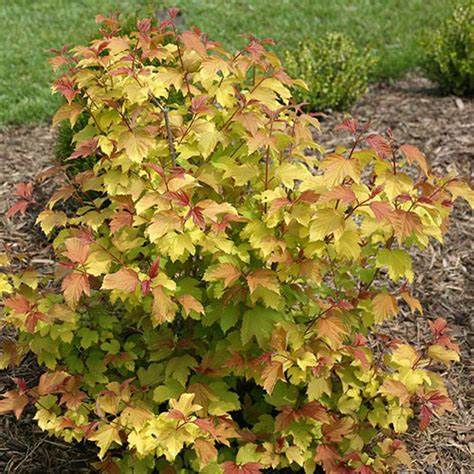Riverdene Garden Center
Oh Canada European Cranberry
Oh Canada European Cranberry
Couldn't load pickup availability
Viburnum opulus ‘Oh Canada’
Oh Canada™ European Cranberry is a cold-hardy, compact deciduous shrub known for its dense green foliage, stunning fall color, and bright red berries that persist into winter. It is drought-tolerant, low-maintenance, and deer-resistant, making it an excellent choice for hedges, mixed borders, wildlife gardens, and prairie landscapes in Southwest Saskatchewan (Zone 2-7).
Unlike true cranberries (Vaccinium spp.), this plant is an ornamental viburnum and is not a true edible cranberry—the berries are best left for birds.
Planting & Location
- Hardiness Zone: 2-7 (excellent for prairie winters)
- Mature Size: 4-5 feet tall, 4-5 feet wide
- Growth Rate: Moderate (12-24 inches per year)
- Sunlight Needs: Full sun to partial shade (best fall color in 6+ hours of sun)
-
Soil Preference:
- Prefers moist, well-drained, loamy soil.
- Tolerates clay, sandy, and alkaline soils.
- Adaptable but avoids standing water—ensure good drainage.
- Spacing: 4-6 feet apart for a hedge, 6+ feet apart for individual plantings.
Watering
- Young Shrubs (First 1-2 Years): Water deeply 1-2 times per week to establish roots.
- Established Shrubs: Drought-tolerant; water every 2-3 weeks in dry conditions.
- Avoid Overwatering: Prefers moderate soil moisture but does not like soggy conditions.
Fertilizing
- First Year: No fertilizer needed—focus on root establishment.
-
Mature Shrubs:
- Apply a balanced slow-release fertilizer (e.g., 10-10-10) in early spring if growth is slow.
- Organic alternative: Compost or well-rotted manure in spring.
Pruning & Maintenance
- Best Time to Prune: Late winter to early spring, before new growth starts.
-
How to Prune:
- Remove dead, diseased, or crossing branches.
- Lightly shape if needed, but avoid heavy pruning.
- For hedges, trim after flowering to maintain shape.
Flowers & Fruit
- Bloom Time: Late spring (May-June)
- Flower Color: White clusters (flat-topped, lacecap-like blooms)
- Berry Color: Bright red, persisting into winter
- Wildlife Benefits: Berries attract birds in winter, and flowers support pollinators.
Pest & Disease Management
Resistant to: Deer, drought, and urban pollution
Common Pests:
-
Aphids – Can cause leaf curling and sticky honeydew.
- Solution: Spray with insecticidal soap or introduce ladybugs.
-
Leaf Beetles – May skeletonize leaves.
- Solution: Remove affected leaves and use neem oil if needed.
Common Diseases:
-
Powdery Mildew – White fungal coating on leaves.
- Solution: Improve airflow and apply fungicide if necessary.
-
Leaf Spot (Fungal or Bacterial) – Causes brown leaf spots.
- Solution: Avoid overhead watering and remove infected leaves.
Winter Protection
- Highly winter-hardy, but young plants benefit from mulching (2-4 inches) around the base.
- Berries Persist in Winter: Adds seasonal interest and feeds birds.
- Rodents & Rabbits: Use tree guards or fencing to protect from chewing in winter.
Landscape Uses
Great for hedges, windbreaks, and privacy screens
Attractive white flowers in spring and red berries in winter
Brilliant red fall color for seasonal interest
Drought-tolerant and adaptable to prairie soils
Attracts birds and pollinators
Additional Notes:
- Oh Canada™ European Cranberry is one of the best compact viburnums for cold climates, thriving in urban and rural landscapes alike.
- Lifespan: 30-50 years with proper care.
- Works well in wildlife gardens, mixed borders, and as a specimen shrub.
Photo courtesy of Vanstone Nurseries
Share


